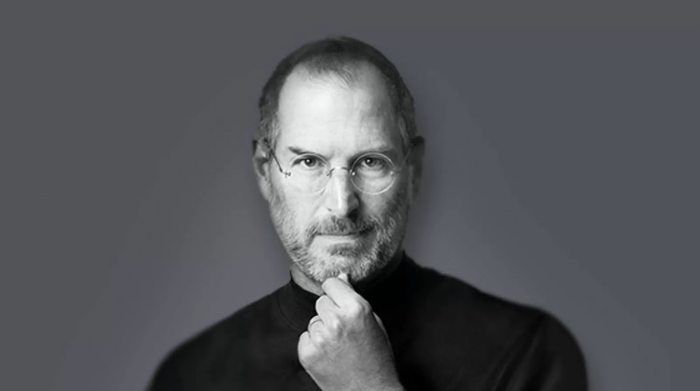Team neurodiversity and competitive advantage on the market
September 3 2022

Ten artykuł przeczytasz w: 10 minut
With today’s highly demanding market and increasingly aware customers, your business needs to gain every advantage it can. One of such advantages is undoubtedly a well-structured team. But what does it actually mean? Learn about one of the most unobvious competitive advantages on the market – neurodiversity. Team neurodiversity gives you a different point of view on the same issues, increases creativity at work and ensures a more productive and complementary team.
Neurodiversity – what does it mean?
The term simply refers to the varied, different “wiring” of the human brain. The neologism itself was popularised in the late 1990s by an Australian-American duo: sociologist Judy Singer and journalist Harvey Blume. The pair used the term to describe the diversity of human brains in key areas such as learning, recreation, sociability, mood, focus. The term itself does not stigmatise and simply denotes different ways of developing and functioning.
This only means that everyone is different, but all equal. Thus, neurodiversity also includes, for example, mild, global symptoms characteristic of autism. It is a mild autism spectrum disorder. This does not mean, however, that neurodiversity means only that or is some kind of threat. On the contrary. Neurodiversity in business means that the challenges faced by the team can be addressed from different perspectives. After all, everyone thinks in a different way, everyone perceives the world differently and brings their own unique perspective to play. This is very valuable. All the more so as it is not just about employing people on the autism spectrum and other neurodiverse people. It is primarily about increasing creativity in companies.

Is it even worth having a neurodiverse team in your company?
It is very much needed in today’s business. According to a LinkedIn study, as many as 75% of marketing teams of the 1,600 companies surveyed are ineffective. Completely. Their creativity and effectiveness were rated one star out of five. And that means … zero. LinkedIn evaluated B2B paid adverts and their reach. The result was extremely bad.
In the same, very elaborate report, the portal interestingly and rightly says that the world today is oriented towards the left hemisphere of the brain. It is highly specialised, promotes repetition, literalism, self-indulgence, dogmatism and categorisation. Meanwhile, the right hemisphere of the brain promotes connections and relationships, context and holism, empathy, self-awareness and challenging the status quo.
How does all this relate to commercial activity? Well, very closely. The world has long moved away from the rat race and Wall Street sharks. Today, not only in the innovation-leading IT industry, collaboration and relationships are important, as well as empathy. But it is still not enough.
To compete successfully on the market today, it is necessary to have consumer empathy. It is about understanding their problems in order to offer them a unique selling proposition. Something that only your company offers. Added value. It cannot be the price. It has to be something tangible, and important that solves the customer’s problems. It can be a feature of the product or service. It can also be a specific, unique way of providing service and sales support. It can be many things, but it has to be SOMETHING. A standard team, where everyone thinks the same way, is bound to struggle to develop this approach. And to understand the business as such and to offer value.

Role of leadership in the innovation process
This is where the significant role of leadership comes in. In companies and teams. It is important that the leader adopts an attitude of active listening and collects feedback from the team. And also helps implement innovations. This is the now trendy philosophy of so-called servant leadership. What does this mean in practice? In addition to removing obstacles to success for the team, it involves creating the right prospect to hire competent people. For example, ones that challenge the status quo and are useful rebels. As I write in my article on diverse personalities, such individuals bring a huge amount of value to a company.
The question, they adopt a “devil’s advocate” attitude. And they are also intelligently lazy. When everyone does everything in the same predetermined way “because it worked”, such lazybones are effective because they find a way to get things done, but differently. Faster, cheaper, and more efficient. Sure, this is simplified to some extent, but research (and practice!) shows that it really works.
What does neurodiversity have to do with it? Well, neurodiversity in the workplace requires a certain amount of open-mindedness and acceptance of arguments that prove its effectiveness. More and more research is showing that the neurological differences between people, and such as the ones behind Asperger’s or ADHD, are actually caused by genes. According to John Elder Robison, a researcher working at the public William & Mary University in Virginia, USA:
Many people who understand the concept of neurodiversity believe that “differentiated” people do not need treatment at all. They need help and anchorage.

It is about work, for example. Today, the market really demands something extra. It requires an understanding that the true nature of innovation is different to what we previously believed. More holistic and permeating many areas of the company. Today, innovation requires reaching for something more, something borderline. This is about a different perspective. About avoiding the beaten track. If you don’t believe it, read the Harvard Business Review article. It says the same thing.
And if you still don’t believe it, consider that neurodiverse people include Albert Einstein, Andy Warhol and Lionel Messi. I think they did quite well…
What can Leonardo da Vinci, Steve Jobs and Walt Disney bring to your business?
Creation. Thinking outside the box. Above-average talent. And the courage to dream the impossible. Some have combined technology with art, eminently redefining the market and delivering ground-breaking products. Like Steve Jobs, who had the soul of an artist but understood technology (and marketing) like few others.
The same can be said for Walt Disney’s team and himself. As Ed Catmull writes in his bestselling book “Creativity, Inc.”:
Between 1950-1955, Disney produced three films that we now consider classics: Cinderella, Peter Pan and Lady and the Tramp. More than half a century later, everyone still remembers the glass slipper, the Island of the Lost Boys or the scene where the cocker-spaniel and the mutt eat spaghetti together. But only a few people are aware of the technical sophistication of these films. Disney animators were forerunners in the use of modern technology and instead of being limited to existing tools, they invented their own solutions. They had to create tools on their own to improve sound and colour reproduction, as well as tools to apply effects to the blue screen, invent the multiplane camera and develop ways to use xerography technology. Walt Disney introduced each subsequent invention and talked about it in his program, emphasising the relationship between technology and art. I was still too young at the time to understand that such synergy was a real breakthrough in thinking. For me, the combination of the two issues was entirely logical.

So much for the long but necessary quote. Let’s ask ourselves – would a team of people thinking and feeling with the left hemisphere of the brain have reached such heights? No, just as a purely “right-brain” team would not have done it. It is all about diversity. Life is an experience. It’s about making it effective, enjoyable and happy. So is the customer experience. Doesn’t the above quote remind us of something? Today’s IT industry. Here, what matters is not only a good digital product, a good app, but also user experience. User experience, user interface (UX/UI) – it’s all important today.
MVP, MLP and team neurodiversity
In fact, today, instead of the term minimum viable product (MVP) denoting a product launched as a test with incomplete functionality, early products are referred to as minimum loveable product (MLP). The difference? The former is usually created quickly to test the business concept and see how users will react. Such an application does not yet have all the planned functionality, but it is already advanced enough for users to use it and understand the value it provides them.
The problem? Increasingly, there are products on the market that are underdeveloped. They are created quickly and released to test concepts, but also to satisfy investors. They do not satisfy users – they are technically unreliable and their functionality leaves a bit to be desired. This is why the concept of MLPs emerged – it is an MVP created with respect for the user. Still incomplete, still not fully functional, but refined and showing its true market character.
And now a question – how does this relate to diversity? Very simply. After all, someone has to test these applications. Pay attention to detail. Understand the user. And users are, after all, hugely diverse. Will an average, even professional tester, pay attention to absolutely every aspect of an application’s performance? Will they come up with every idea that comes to the user’s mind that could cause the application to freeze or completely crash? Possibly, but this is not necessarily always true. Just as it is not necessarily true that employing people with diverse brain “wiring” in a team must immediately result in a 200% jump in productivity. No, this is probably not going to happen. The idea is to increase the chances of creating a unique perspective. And this already translates into real returns and that 200% over a slightly longer time horizon.
Neurobiological customer experience, i.e. the market provides the evidence
If you are still sceptical, listen to what the market itself has to say. But first read these few words from me – today’s client is focused on a few things:
- their needs and expectations being genuinely addressed
- consumer empathy
- hyper-personalisation
- experiences, not only purchase and sale transactions
- reasons to be loyal to the brand and to involve them in the life of the company
This is what makes all the difference between a brand and a company that sells. The brand is an indicator of quality. It solves problems, addresses dreams and becomes a target for the aspiring middle class. It can perform a variety of functions. A different one for everyone. But to do so, it needs to rise to a new level.
This is perfectly evident in retail. COVID-19 showed how customers are turning to experiences rather than simple purchases. Trade has largely moved online, but this does not mean that classic outlets are doomed.
Regular stores should be designing the customer experience at this point. Becoming something of a brand temple. A place where its customers and fans can meet. Where they can get to know the company representatives and each other. Exchange experiences. Learn something, get inspired. And this requires more than a simple shop design. This requires having in mind a specific user group’s perception of the world at the design stage.
The customer is transformed into an engaged customer (brand ambassador) by three factors: activation, encouragement and enrichment. This is why onboarding the users of a digital product, the right behaviour of staff in case of complaints and talking about new products in the store are so important. In today’s environment of uncertainty and constant change, the companies that are able to create a bond with the customer and maintain it over the long term are the winners. This is what turns companies into brands. This is what branding is.
How do we achieve that? Focus groups are ok, but do not answer all the questions. All the more so as customers do not usually see changes between successive models of a prototype or final device. It just “is this way” for them and that’s it. Electrolux has solved the issue in an interesting way. The global white goods manufacturer set up a research laboratory in Stockholm. It looks like a typical kitchen but is equipped with 15 hidden cameras. They record how potential customers use the prototypes. Observation, learning, a different point of view!
Some of Electrolux’s tests also include recording subjects’ reactions with the use of smartwatches with special software. These, based on neurophysiological changes, record reactions such as frustration or excitement. The neurological data collected in this way helps the consumer research team ask the right questions. The lab meticulously registers and records everything from the amount of time spent trying to set a program in the dishwasher (and the potential frustration of learning a new piece of equipment), to the satisfaction you get from ironing with a new iron.
Typical surveys will not produce such results. Measuring brain activity is what matters today. And such data can be collected and analysed by a professional, diverse team. And then they can implement the changes and promote the product.

A little bit about me to end with
I don’t have Asperger’s syndrome, but I know what a lack of understanding means. I happen to be a multi-talented person (I have a so-called T-shaped personality). I have had problems with this since I was a child, because the education system wanted to “make me fit” its expectations at all costs (and obviously failed to do so). At university, my second academic supervisor rejected my thesis because it didn’t fit with his concept of the course I was on. The problem was that it fitted in perfectly, only the take was unusual, and the work itself was ground-breaking even on a global scale (I know what I’m saying, I did some very serious research before writing it).
Things did not get any better in the early days of my professional activity. I was too versatile and not easy to label. I don’t do everything and I don’t know everything. Marketing itself is broad and deep, and I do not provide every possible service in its field. But I offer versatility, intersecting skills, knowledge, experience and unique insights.
Just like neurodiverse individuals. They see the world a little differently. This does not mean worse. This does not mean atypical. Simply put – from a different angle. And this angle is worth fighting for today, because a different perspective is a real competitive advantage. Diversity is not a threat, it is an opportunity. The more interesting the team, the greater the impact on the organisation and the greater the opportunities for innovation. Bringing real benefits for companies and, above all, customers.
Remember – you don’t have to be perfect to create ideal products. You just have to be authentic. It is done with the strength of the team.
O Autorze

